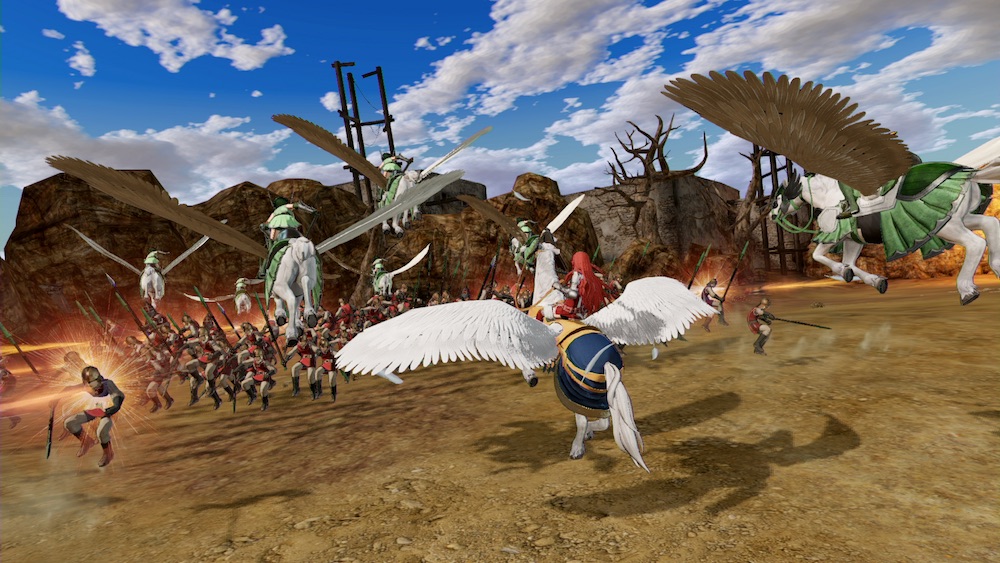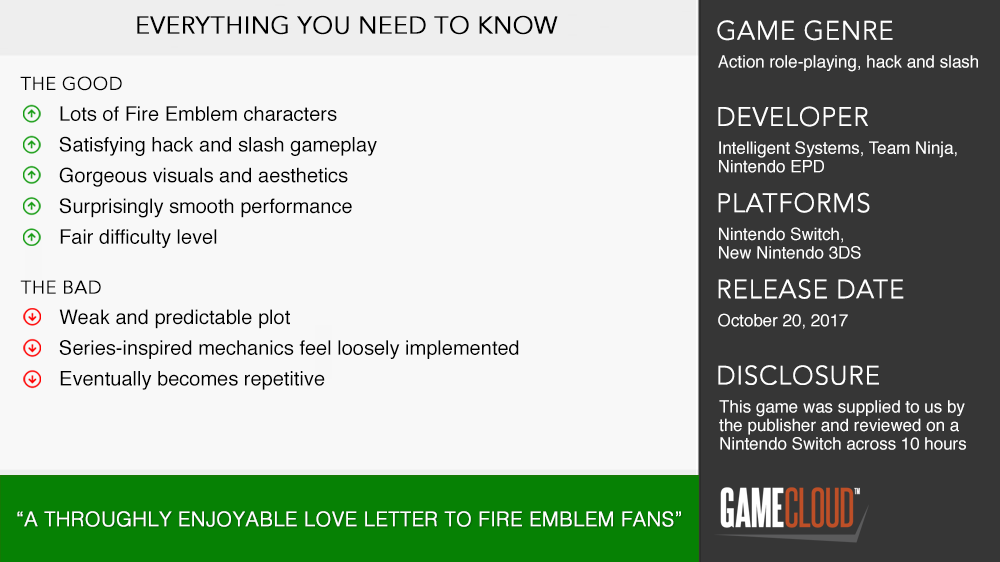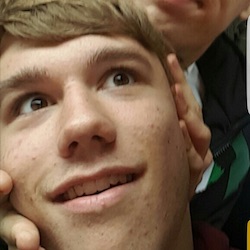
Would you believe me if I told you that Fire Emblem was on its last legs just five years ago? Because I certainly wouldn’t. As the thirteenth entry in the series, 2012’s excellent Fire Emblem Awakening needed to sell 250,000 units, and if it didn’t, the franchise was gong to be shelved for low sales. Little did Intelligent Systems and Nintendo know, though, is that it would go on to breathe new life into the franchise. Since then, Fire Emblem’s had a massive boost in popularity, effectively three brand new entries into the series via the Fates trilogy, an innovative remake of the lesser-known Fire Emblem Gaiden, and even a mobile app. After The Legend of Zelda received the Dynasty Warriors treatment, it was only a matter of time until Nintendo put forward another IP for Omega Force and Team Ninja to turn into a power fantasy unlike any other. Fire Emblem’s universe is a good fit for the Warriors formula, and as a fan of the franchise since Awakening, I was excited to see my favourite characters come together in this hack and slash spin-off.

Fire Emblem Warriors is set in the brand new region of Aytolis and follows the royal twins of its kingdom, Rowan and Lianna. After monsters attack the castle, the twins are separated from their mother, Queen Yelena, who trusts them with the Fire Emblem before being captured. They learn that Aytolis’s rivalling kingdom is behind the attack and that they plan to revive the Chaos Dragon and use it to win the war. It falls to Rowan and Lianna to travel across dimensions to various kingdoms of Fire Emblem games past, such as Ylisse, Nohr, Hoshido, and Altea to seek support from their inhabitants and to complete the Fire Emblem.
It’s a relatively bare-bones plot with few surprises throughout its 7 hour duration. I also can’t help but feel it ultimately serves as means to bring all these characters and kingdoms together. It does the job okay, but it fails to replicate any of the impact that’s found in the more recent Fire Emblem games. None of the new characters are ever fully fleshed out, so it feels like Rowan and Lianna are there for the sake of having an original character or two within the plot. I can appreciate what Team Ninja and Omega Force were angling for here, but it’s executed in such a way that fails to resonate as anything more than being a means to an end.
If you’ve played any Warriors game before, you know exactly what you’re getting into with Fire Emblem Warriors. Much like Hyrule Warriors, the title is a mix of mechanics commonly found in Fire Emblem games and the cathartic power trip of hacking and slashing your way through hordes of cannon fodder. Much like the games it bases itself upon, the story is split up into chapters, with each chapter having its own objective. They usually involve defeating a target or capturing some enemy fortresses, but ultimately, these goals are achieved in the same way.
The other primary mode in Fire Emblem Warriors is the History Mode, which is most similar to Hyrule Warriors’ Adventure Mode. It takes maps from Fire Emblem Fates, Sacred Stones, and more, and decorates them with numerous challenges to tackle, climaxing with an encounter against a villain from that particular game. Each map is complete with original sound effects and sprite work, which really gets the nostalgia going, especially for older games. This is where most of the fan service takes place, and fans will undoubtedly be pleased with the care and attention to detail that’s gone into creating this mode.

Warriors games are well known for the inherent power trip you get from the way the games are designed, and Fire Emblem Warriors is no different. It brings together a plethora of characters from across the series, going as far back as Marth and Tiki to the more recent units like Corrin, Ryoma, and Xander. There’s a healthy number of units to pick from a range of titles, and each one holds true to its unit in its respective game. Pegasus knights ride on horseback, Corrin can transform into her dragon form, and each unit uses their respective weapon, whether it be a sword, an axe, a bow, or a magic tome. It makes for a lot of variation, and there’s bound to be at least one character for each player. Swapping between them on the fly also helps to ensure the battle never grows stale too quickly.
What makes Fire Emblem Warriors different from other Warriors titles is that it tries to incorporate Fire Emblem sensibilities and mechanics that are now series staples in the franchise. Things like the Weapon Triangle, pairing units, and character positioning before battles are all taken into account. Although, it is pretty easy to forget about half of them. The Weapon Triangle is easily the most effective out of the new additions. It determines how much damage you’ll do to particular units and can often mean the difference between winning and losing a chapter’s battle if you take too long to defeat a unit due to its resistance to a particular weapon type. Pairing units might seem like a good idea initially, but it quickly shows itself to be a double-edged sword. Pairing two units together means you have two people in the same place at once, and while you can swap in and out instantaneously, it’s much more helpful to have that unit on the other side of the map in case an objective pops up there. Finally, character positioning is probably the only new mechanic I actively used. It allows you to move any of your units to attack a stronghold, defeat a target, or just take up a position on the map in case you need to get to it quickly. Considering Hyrule Warriors handled it’s Zelda-inspired mechanics so well, it’s unfortunate to see some of Fire Emblem’s loosely implemented.
Another thing that Fire Emblem Warriors inherits is the difficulty of Fire Emblem. It’s never excessive or incredibly challenging like the games it’s based upon, but some encounters definitely test your skill and positioning. When you start, you’re asked whether you want to play in Casual or Normal mode, much like in other Fire Emblem titles. If units die in normal, they stay dead and unusable for the rest of the game, while in casual they can be revived. Playing on normal difficulty adds a level of suspense I’ve never felt in a Warriors game before, which was a refreshing change.

The combat is the real meat of the experience in any Warriors game, and while it’s reasonably straightforward, it’s incredibly enjoyable for the first few hours. You have a light attack and a heavy attack which can be combined together to do various flashy combos unique to each character. Almost every enemy except significant units die in a single hit, so you’ll tear through wave after of wave of enemies, and it’s immensely satisfying. This fills Warrior Meter which allows you to perform a special move with a significant area of effect, and also fills the Awakening Gauge, which enables you to enter an enraged state, dealing more damage and making your weapon strong against every other regardless of the triangle. It makes for a short and satisfying gameplay loop that’ll initially hook its teeth in you, but towards the end, it starts to get repetitive, and playing new characters only does so much to alleviate this monotony.
Before you go into each chapter’s encounter, you’re able to upgrade characters by providing them with offensive and defensive upgrades using the materials you loot from past battles. You can also equip each unit with a weapon and consumable item, apply blessings at the church, and even level up any under-powered units you may have at the training grounds. These features are commonplace in Warriors games at this stage, but it’s nice that Fire Emblem Warriors hasn’t been forgotten in this regard because unit customisation adds a degree of personal touch and organisation that I’m sure many will appreciate.
Both Fire Emblem games and the Warriors games are well known by their aesthetics, and they’re combined here in wonderful fashion. In battle, character models are incredibly detailed and well animated, and the particle effects that come off of their respective weapons are just as flashy. The environments take a hit because of this, which often aren’t very detailed or engaging, but they aren’t distractingly ugly, and it’s ultimately worth the sacrifice when everything else looks so gorgeous. The map is heavily Fire Emblem inspired, with cute little 2D sprites covering the grid-based battlefield. It’s also hard to believe that this is true, but there are almost no frame rate issues despite the number of enemies that can be on the screen at any given time. The only time I experienced any noticeable frame drops was during the final boss battle, but otherwise, it was a smooth 30 frames-per-second the whole time, and if that isn’t enough for you, you have the opportunity to drop the resolution in exchange for 60 frames-per-second.

Fire Emblem Warriors is a niche title, so it’s definitely not going to be for everyone. I can only really recommend it to Fire Emblem fans, and even then, only those fans who enjoy this type of game. Nevertheless, it does successfully pull together many likeable characters from games past and wrap them together in a satisfying hack and slash experience. The game also combines the gorgeous visuals and aesthetics from the two franchises it bases itself on and manages to maintain a consistently stable frame rate regardless of how much is thrown on-screen at once. Sure, the plot might be relatively weak and the series-inspired mechanics loosely implemented, and it will eventually become repetitive, but that doesn’t mean a whole lot of fun can’t be had with the power trip that comes with this love letter to Fire Emblem.











